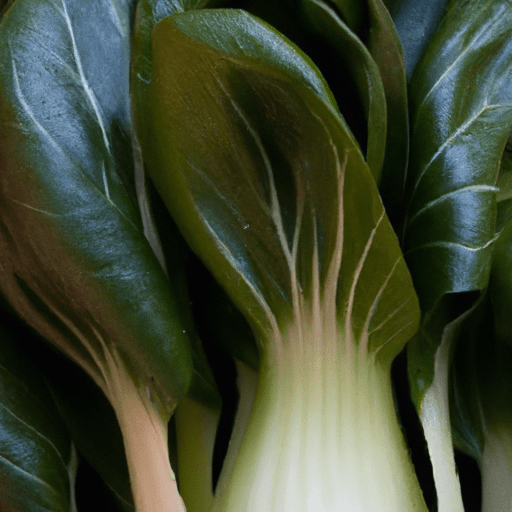The Wonderful World of Baby Bok Choy
If you’re looking to add some excitement to your cooking repertoire, look no further than baby bok choy. This leafy green vegetable, hailing from the cabbage family, has gained popularity in recent years for its unique taste, versatility in the kitchen, and impressive nutritional profile. In this post, we’ll dive into the delightful world of baby bok choy, exploring its flavor, common uses, nutritional benefits, and some interesting historical tidbits.
A Taste Sensation
First and foremost, let’s talk about the taste. Baby bok choy boasts a mild and slightly sweet flavor, making it a fantastic addition to many dishes. Its tender leaves and crispy stalks create a pleasing contrast in texture, adding a delightful crunch to any meal. This vegetable has a milder flavor compared to regular bok choy, allowing it to blend seamlessly with a wide range of ingredients and flavors.
Versatility in the Kitchen
Baby bok choy is a culinary chameleon, effortlessly adapting to various cooking methods and flavor profiles. Its versatility makes it the perfect addition to stir-fries, soups, salads, and even as a side dish. Its miniature size and tender texture make it quick and easy to prepare, making it an excellent choice for both seasoned cooks and kitchen novices.
One popular way to enjoy baby bok choy is in a stir-fry. Simply sear it quickly over high heat with some garlic, ginger, and soy sauce for a delightful Asian-inspired dish. Alternatively, steam or blanch baby bok choy to retain its crispness and vibrant color, then drizzle with a dash of sesame oil and sprinkle with toasted sesame seeds for a simple yet satisfying side dish.
Nutritional Powerhouse
When it comes to nutrition, baby bok choy is a true superstar. Packed with vitamins, minerals, fiber, and antioxidants, this leafy green veggie provides a wide range of health benefits. It is particularly rich in vitamin C, vitamin K, folate, and calcium, making it an excellent choice for supporting immune function, promoting bone health, and even reducing the risk of chronic diseases.
What’s more, baby bok choy is incredibly low in calories, making it a popular choice for those looking to maintain a healthy weight or enhance their overall well-being. Its high water content also adds to its hydrating properties, supporting optimal hydration and aiding digestion.
Fun Historical Facts
While baby bok choy may seem like a recent addition to culinary culture, its roots can be traced back thousands of years. This leafy green vegetable has been a staple ingredient in Chinese cuisine since ancient times, and its popularity has since spread worldwide. It has become a beloved ingredient in many Asian dishes, known for its delicate flavor and nutritional benefits.
Interestingly, bok choy was first introduced to the Western world during the mid-19th century, as Chinese immigrants made their way to North America. Since then, it has gained recognition and popularity among chefs and home cooks alike, finding its way into a variety of fusion dishes and modern recipes.
Final Thoughts
In conclusion, baby bok choy is a versatile and nutritious addition to any kitchen. Its mild flavor, tender texture, and impressive nutritional profile make it a tasty and health-conscious choice for a wide range of dishes. So, whether you’re a seasoned cook or a novice in the kitchen, don’t miss the opportunity to bring the wonderful world of baby bok choy to your table. Get creative with your culinary creations and enjoy this delightful leafy green vegetable in all its crunchy glory!
Sure! Here are some interesting facts about baby bok choy:
Origin: Baby bok choy, also known as Shanghai bok choy, is a leafy green vegetable that belongs to the cabbage family (Brassicaceae). It is a variety of Chinese cabbage and has been cultivated in China for thousands of years.
Common Uses: Baby bok choy has a mild, slightly sweet flavor and crisp texture. It is commonly used in Asian cuisine, particularly in stir-fries, soups, and salads. It can also be steamed, sautéed, or braised. The tender leaves and crunchy stems are both edible.
Nutritional Benefits: Baby bok choy is a nutritious vegetable. It is low in calories but rich in vitamins, minerals, and dietary fiber. It is an excellent source of vitamin C, vitamin K, and vitamin A, as well as calcium, iron, and potassium.
Unique Properties: Baby bok choy is known for its distinct shape and appearance. It has small, tender leaves that surround a pale, firm stem. The leaves have a darker green color compared to the stems. The entire vegetable is edible but it is often cooked as a whole.
Historical Significance: Bok choy has a long history in Chinese cuisine and is considered a staple vegetable in many Asian countries. It has been cultivated in China for over 6,000 years and was introduced to other regions, including Europe and North America, in the 18th century. Its popularity has grown worldwide due to its unique taste and nutritional benefits.
Please note that while bok choy is generally safe to consume, some individuals may have allergies or sensitivities to it. As with any new food, it’s best to try a small amount first and monitor for any adverse reactions.




Use the share button below if you liked it.
It makes me smile, when I see it.